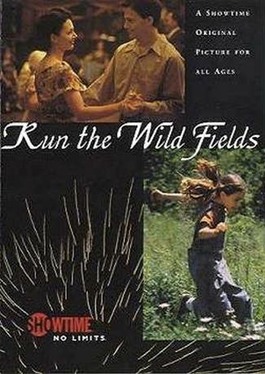 "On those bright mornings, my hope and I would run those wild fields searching for some piece of him (my father) or for some other small seed, left to grow wild and untended, like me," Pug.
"On those bright mornings, my hope and I would run those wild fields searching for some piece of him (my father) or for some other small seed, left to grow wild and untended, like me," Pug.
Run the Wild Fields is told by a woman reflecting on her childhood memories when she lived on a farm with her mother in North Carolina during World War II, a period of fierce patriotism in America. She reminisces about her mother and a drifter called Tom, who made a major impact on her life when she was 10.
Although Pug's (ALEXA VEGA) father has been missing in action for three years, her mother Ruby (JOANNE WHALLEY), who has let the farm lie fallow ever since, firmly believes he will return home. She reinforces her hope by a nightly ritual with Pug, winding Frank's watch, which helps keep him alive in their minds.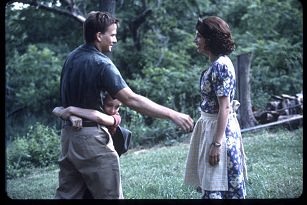
When a mysterious and gentle drifter Tom (SEAN PATRICK FLANERY) enters their lives, Ruby and Pug befriend him. Ruby's wealthy neighbor, Silas (COTTER SMITH), who's been courting her, is jealous, and, with the sheriff's help, discovers that Tom served time in a Civilian Public Service camp after refusing to fight in the war, an act that brands Tom as a coward and draft dodger in the eyes of the townsfolk. 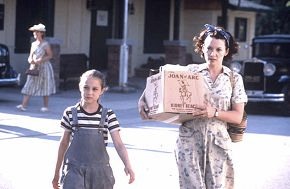 Tom, who remains silent on this issue, brings new life to Pug and Ruby. His presence on the farm inspires Ruby to start working the land again. Despite others' views to the contrary, he instills hope in them that Frank will return one day. As all three work sowing seeds together, Tom becomes a father figure to Pug and a love relationship begins to build between himself and Ruby.
Tom, who remains silent on this issue, brings new life to Pug and Ruby. His presence on the farm inspires Ruby to start working the land again. Despite others' views to the contrary, he instills hope in them that Frank will return one day. As all three work sowing seeds together, Tom becomes a father figure to Pug and a love relationship begins to build between himself and Ruby.
When a 4th of July festivity erupts into a potential fight, Ruby and Pug find themselves defending Tom against the town bullies. Pug is so taken with Tom, she hides a letter from Frank, who released from a prisoner-of-war camp, is coming home. As the seeds begin to sprout on the farm, the entire town explodes with joy when the end of the war is announced. During the ensuing celebrations, Tom, in an act of bravery, risks his life rescuing Pug and one of the bullies, from a burning stable. Simultaneously, the townsfolk discover the poignant and justifiable reason why Tom is a pacifist—he was a hero in the Spanish Civil War where his younger brother had died in his arms.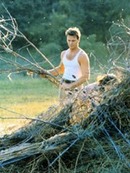
Back at the farm, the attraction between Tom and Ruby becomes almost insurmountable. But when he discovers Frank's letter, he realizes he must make the ultimate sacrifice. As he leaves, he meets a soldier on the road. They exchange brief words as the soldier lights Tom's cigarette in a symbolic exchange of the torch. Ultimately, we realize, the soldier is Frank on his way home.
"He gave my mother and me his hands, his heart and his hope… in a very small way and for a very short time….", Pug.
REVIEWS
NEW YORK DAILY NEWS - Touching 'Fields' a real find By Kay Gardella
Occasionally, a film comes along that touches the heart in a very special way. Because it's such a simple film with no earthshaking message, it's hard to explain why a movie like today's choice speaks so eloquently to our sensitivity, our humanity and, especially, our heart.
Two major reasons why "Run the Wild Fields," on Showtime tomorrow night at 8, is so effective are: Rodney Vaccaro's dandy script, based an his play "And the Home of the Brave," and the understated performance of Sean Patrick Flanery
Flanery plays Tom, a drifter who becomes an important part of the lives of two people, Ruby (Joanne Whalley) and her young daughter, Pug (Alexa Vega).
The time is World War II and the setting a small farm town in the West. The narrator is Pug, who looks back on her childhood and the influenceof Tom upon her life.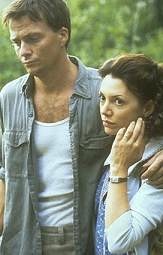 Some brief background on Flanery, who is 34: On TV, he's remembered for the title role in "The Young Indiana Jones Chronicles." His films include "Powder," "Simply Irresistible," "Suicide Kings" and 'The Grass Harp." Watching him, one can't help but be reminded of a younger Robert Redford.
Some brief background on Flanery, who is 34: On TV, he's remembered for the title role in "The Young Indiana Jones Chronicles." His films include "Powder," "Simply Irresistible," "Suicide Kings" and 'The Grass Harp." Watching him, one can't help but be reminded of a younger Robert Redford.
It's when his character of Tom is found bleeding on the roadside after an attack by dogs that the drama begins. He's found by Pug and offered shelter by her mother; who has been patiently waiting for three years for the war to end and her husband, Frank, to come home.
Small town suspicions immediately surface when Ruby, to keep Tom out of trouble, offers him work on the farm. Silas (Cotter Smith), a neighbor with designs on Ruby, tells her he's "bothered by this situation," and proceeds to dig up dirt on Tom. He's painted as a draft dodger, and a "Nazi lover" by Pug's young friends.
Meanwhile Tom works the farm and slowly and gently becomes an integral part of the lives of Ruby and her daughter. There are touching scenes between the child and Tom, who is her constant companion. He delights her by teaching her to dance for a Fourth of July celebration, where he's taunted by bullies who call him a coward.
Even Ruby has warmed to Tom, and while there are moments when their mutual attraction seems about to blossom they're always respectfully restrained. (Don't expect any tearing off of clothes here.) But there are secrets of Tom's past hidden in a little box in his room, which Pug gets hold of that add substance to the plot. Without revealing the details, you can bet he was no coward.
Then, too, there's the question of Frank, and will he return? The film's ending alone is worth your time. There is the added bonus of a fine cast, splendidly directed by Paul A. Kaufman, who also was executive producer.
LOS ANGELES TIMES - Loyalties, Loss and Longing fill Showtime's 'Wild Fields' By Lynne Heffley
For the wife and young daughter of a missing ina ction World War II soldier, it's not "if" he will return, it's "when." Time passes, though, and hope becomes habit, until the unsettling arrival of a taciturn young drifter. What happens to all three is told by the daughter, looking back to her childhood, in "Run the Wild Fields," a Showtime family movie premiere.
Written by Rodney Vaccaro, who adapted it from his play, "Home of the Brave," this tale of a woman learning to remembrance life, as seen through the eyes of her 10-year-old daughter, Pug (Alexa Vega), doesn't deliver the depth it promises, but it does dip below the surface.
That's primarily because of Joanne Whalley's dignity as enduring wife Ruby, and to many quietly observed moments, including a thoughtful ending that rises above predictability.
In a small rural town, Ruby helps injured drifter Tom (Sean Patrick Flanery), then takes him on as hired hand for the family farm. Both Pug and Ruby find themselves drawn to handsome Tom--who clearly has his own ghosts to lay to rest-and they struggle with confused loyalties, loss and longing.
In the small, patriotic rural town, Tom is soon rumored to be a draft dodger and becomes a target for bullies; Pug defends him with her fists; and hard nosed neighbor, Silas (Cotter Smith), who aches to be Ruby's suitor, suffers escalating jealousy.
Under Paul A. Kaufman's direction, the film's strength is most often found in Whalley and Flanery's stillnesses and expressive faces. (Flanery's only false note is his unaccountably Marlon Brandoish soliloquy as Tom reveals his past.)
Some moments ring deeply true: the way eyes follow the wartime telegraph truck's approach with frozen dread; Pug's guilty yearning for Tom to take her father's place; Ruby's try at taking an irrevocable step away from her missing husband; and an understated encounter that wouldn't be fair to give way. Not many surprises, but no cheap shots, either.
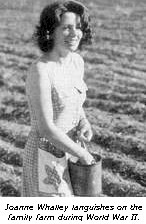 THE HOLLYWOOD REPORTER - Maybe to get this made as a theatrical release, you'd have to throw in a couple of gunfights and a bar brawl, but Showtime's "Run the Wild Fields" is a tender, well acted film that deserves exhibition in any and all venues.Touching without lapsing into overt sentimentality, the World War II-era telefilm reflects well on everyone who put this production together. The memory story is narrated by an unseen woman who recalls childhood experiences on her parents' North Carolina farm. The narrator is young Opal, nicknamed Pug (Alexa Vega), who lives on the farm with her mother, Ruby (Joanne Whalley).
THE HOLLYWOOD REPORTER - Maybe to get this made as a theatrical release, you'd have to throw in a couple of gunfights and a bar brawl, but Showtime's "Run the Wild Fields" is a tender, well acted film that deserves exhibition in any and all venues.Touching without lapsing into overt sentimentality, the World War II-era telefilm reflects well on everyone who put this production together. The memory story is narrated by an unseen woman who recalls childhood experiences on her parents' North Carolina farm. The narrator is young Opal, nicknamed Pug (Alexa Vega), who lives on the farm with her mother, Ruby (Joanne Whalley).
Ruby has been languishing, ever since her husband Frank went to war. There has been no word of him for three years, but Ruby's still hanging on, hoping he'll return. She refuses to work the fields, waiting for Frank and she makes a nightly ritual out of winding his watch. Resisting offers of help from wealthy neighbor Silas (Cotter Smith), Ruby also turns away from his romantic interest
Into this mix comes a drifter, Tom (Sean Patrick Flanery), upon whom Ruby takes pity She offers him a place in the barn and meals if he'll help her around the farm, and eventually she decides to plant the neglected fields. Silas, jealous of the mysterious stranger, discovers with the help of the sheriff that Tom did time in a Civilian Public Service camp after refusing to fight in World War II. Tom is branded a coward and draft dodger by the ultrapatriotic town, and that brings trouble to Pug and Ruby, who try to hide their disappointment about Tom's apparently cowardly ways.
Naturally, there's more to Tom than meets the eye, and as things come to a dramatic head, Ruby and Tom grow closer. Ultimately, a couple of surprises come out of left field, twists that actually make the story richer. Whalley's character is delightfully strong and opinionated, although she follows the Popular Zeitgeist of prowar sentiment Although the audience may be rooting for her to take the leap and quickly embrace this new romance, her hesitation is copletely in character and makes the story even more poignant.
As for Flanery, his Tom is the quintessential Southern gentleman, an honest man perfectly suited to a romantic tale like this one. Vega's young girl does a fine job as well, shooting off enthusiasm and high spirits and unhappiness with finesse.
Photography and settings are rich and dreamlike, giving the perfect frame to another era.
THE DAILY VARIETY - A gentle WW-II-era drama set in a small North Carolina town, Showtime's "Run the Wild Fields" is the type of memory pic that used to pop up on PBS' now defunct "American Playhouse" years ago. Rich in period detail and featuring a strong cast and beautiful lensing, pic falters a bit in the pacing department during its second act, but finishes on a solid note nonetheless.
Story is seen through the eyes of spunky 11-year-old Opal, who recalls the bucolic days spent with her mother on their family farm, while her dad was serving overseas. When a handsome drifter (Sean Patrick Flanery) enters their lives and is hired to help out on the farm, complications arise that leave a lasting impression on the narrator. "I'm thinking he's mysterious," says Opal to her friends, and she's quite right.
Although the stranger is called a coward and a draft dodger by the unsympathetic townsfolk, Opal and her mother let the young man stay on the farm, and eventually, the real truth about his past emerges.
Brit thesp Joanne Whalley, who perfected her Southern drawl in the TV mini "Scarlett" a few years back, is quite believable in the role of Ruby Miller, a woman torn by her attraction to the new arrival and her love for her absent husband. She also has a touching rapport with Alexa Vega ("Ladies Man"), the dynamite young actress who carries the film on her little shoulders. Cotter Smith brings much needed tension to the mix as a jealous neighbor who has carried a flame for Ruby for years.
If the film falters in parts, it's because of the stiff, sugary voiceover narration by Deborah R. Sullivan. one can't help think what sort of magic a stronger thesp like Julie Harris or Shirley Knight could have worked with their voices.
Director Paul A. Kaufman's knack for capturing quiet moments is especially reflected in scenes in which a married couple discover the fate of their son from a telegram deliverer, or the reaction of the town's residents to the news of President Roosevelt's death.
Pic scores with Thom Best's lush photography and Vlasta Svovoda's excellent production design. After watching the film, you really feel like you've visited this farm, lived during the Second World War, and known these people which is exactly what an effective coming-of-age tale is supposed to do.
THE WALL STREET JOURNAL - In this moving and atmospheric "Showtime Original Picture for All Ages," an unseen narrator looks back at her childhood on a North Carolina farm during World War II, when she was just 10 and her father had been missing in action for three years. Pug (Alexa Vega) and her mother (Joanne Whalley) befriend a tramp (Sean Patrick Flanery), much to the town's dismay, and find their lives transformed as they take him to their hearts. Paul A. Kaufman directed Rodney Vaccaro's adaptation of his own play, "And the Home of the Brave."
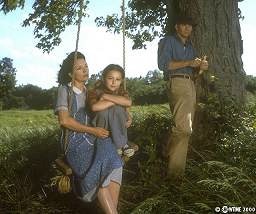 NEW YORK DAILY NEWS - During World War II, there were battles on the home front, too - like the constant struggle to survive with the breadwinner gone, or the fight to maintain hope for missing loved ones.
NEW YORK DAILY NEWS - During World War II, there were battles on the home front, too - like the constant struggle to survive with the breadwinner gone, or the fight to maintain hope for missing loved ones.
"Run the Wild Fields" tells the story of a 10-year-old girl, Pug (Alexa Vega), and her mother, Ruby (Joanne Whalley) on the family farm in 1945 North Carolina. Though Pug's father has been missing in action for three years in the Pacific, her mother still believes he will return.
Pug and Ruby allow a tight-lipped drifter, Tom (Sean Patrick Flanery), to recover from a dog bite at their house. Soon he's hired as a farmhand, working on the land as well as on Pug and Ruby's affection. The townsfolk, on the other hand, take a disliking to the mysterious Tom and label him a coward and draft dodger. The situation on the farm eventually reaches a crisis when Pug begins to view Tom as a father, and Ruby sees him as a possible lover.
The film is well worth watching, not the least for the performances of the female stars: Vega nails her Southern accent, and when she babbles sweetly it's most affecting. Whalley, meanwhile, is smoldering as the woman waiting for her man: she communicates both fortitude and vulnerability.
The script, like Tom, is soft-spoken yet powerful, providing plot and character study in measured doses. The voice-over narrations of Pug as a woman ads a wistful almost sepia tone to the story like a chapter in an old, treasured book. And though it tells an adult story, "Run the Wild Fields" is fine for the whole family.
THE CHRISTIAN SCIENCE MONITOR - Run the Wild Fields (Showtime, 8-10 p.m.): This modest period piece about the effects of World War II on a small southern town has moments of poignancy. A woman reflects back on her childhood, her father missing in action, her mother's brave front, and the drifter that temporarily lightened their lives. Beautifully performed by Joanne Whalley and Sean Patrick Flanery and especially young Alexa Vega.
THE OAKLAND TRIBUNE - In this charming period piece that captures the look and feel of patriotic World War II America, a woman looks back to a time when she and her mother lived on a small South Carolina farm waiting for her father to return from the war.
Her father has been missing in action for three years, and the family lies as fallow as the farm, waiting for a return that may never happen. Into this void walks mysterious drifter Tom, a man some think is a coward who has dodged the war.
Alex Vega is simply captivating as 10-year-old Pug, a young girl in desperate need of a father figure, which she finds in Tom (Sean Patrick Flanery). Tom's a man of few words, but Flanery's able to convey volumes with his expressive face.
Joanne Whalley also steps up to the plate with a powerful portrait of Ruby, who is drawn to this man yet can't quite give up hope that her beloved husband may yet return to her.
Is an engaging story, filled with the promise of better days ahead for all.
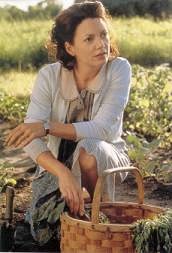 TV GUIDE - JOANNE WHALLEY has been put out to pasture, and she doesn't mind one bit. The 35-year-old British beauty - best known to American audiences as Scarlet O'Hara from the 1994 miniseries Scarlet is swinging on the porch of a quaint, rundown farmhouse just outside Toronto. Built in 1840, the two story structure surrounded by gorgeous green meadows, is the primary backdrop for Showtime's Run the Wild Fields, a film reminiscent of the lush romances that made moviegoers swoon in the 1940's and '50s. The movie, set during World War II, finds Whalley playing yet another Southern belle: Ruby Miller, a lonely North Carolina farmwife torn between her attraction to a sweet, mysterious hired hand (Sean Patrick Flanery) and the loyalty she still feels toward her husband, a soldier missing in action for three years.
TV GUIDE - JOANNE WHALLEY has been put out to pasture, and she doesn't mind one bit. The 35-year-old British beauty - best known to American audiences as Scarlet O'Hara from the 1994 miniseries Scarlet is swinging on the porch of a quaint, rundown farmhouse just outside Toronto. Built in 1840, the two story structure surrounded by gorgeous green meadows, is the primary backdrop for Showtime's Run the Wild Fields, a film reminiscent of the lush romances that made moviegoers swoon in the 1940's and '50s. The movie, set during World War II, finds Whalley playing yet another Southern belle: Ruby Miller, a lonely North Carolina farmwife torn between her attraction to a sweet, mysterious hired hand (Sean Patrick Flanery) and the loyalty she still feels toward her husband, a soldier missing in action for three years.
"I had to play Ruby, because I was fascinated by her moral dilemma," Whalley says during a break in filming. "When does such a woman finally give up hope? When does she decide to get on with her life? I just couldn't imagine how difficult that would be, so I had to find out."
Whalley gazes out at the acres of grass. "It's been so easy throwing ourselves into a simpler time and place," says the actress, who lives in Los Angeles. "We feel the breeze, hear the fields rustling, smell the earth, and we're there. We're not trying to fake it on a soundstage."
The Louisiana-born Flanery 34, who won raves for his roles in the films "Powder" and "Suicide Kings," wanders by in dusty work clothes. He, too, jumped at the chance to do the Showtime movie. "These days, anybody can call himself a screenwriter, and as a result most scripts are true excrement," he says. "But [Fields] is amazing, one of the most beautiful stories I've ever read."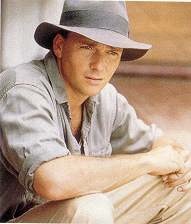
Some considered it too beautiful, though. Paul Rauch executive producer of daytime TV's Guiding Light optioned the story for Fields eight years ago, hoping to bring it to the big screen. "The studios considered it too soft," says Rauch. "The indie companies - because of the period recreation - considered it too big. "The networks weren't interested, either, so Rauchand his producing partner, Paul A. Kaufman (who directed the movie), struck a cable deal. "There is a great fear at the networks that if a movie doesn't have a cliff-hanger for each commercial, viewers start surfing," Kaufman says. "But Showtime loved that (Fields) was so gentle and old fashioned. They bought it right away. No hesitation."
The film, which is light on dialogue and full of steamy stolen glances, is a far cry from Scarlet. "That was baptism by fire," Whalley says of the critically roasted "Gone With the Wind" sequel. "We shot seven straight months, and the end result was eight hours of me talking nonstop. By comparison, (Fields] isa vacation. "Her kids, Mercedes, 8, and Jack, 5, from her marriage to ValKilmer, agree. Says Whalley: "They go swimming in a lake just up the road. They're in there six hours at a time, squealing with delight!"
More squeals emanate from the nearby barnyard, where, between takes, Flanery and 11-year-old Alexa Vega ("The Deep End of the Ocean"), who plays Ruby's daughter, are having a worm-eating contest. Whalley grins at the creepy antics. 'No," she says, laughing, "this would never happen on a soundstage."
PRODUCTION NOTES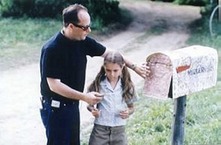 Run the Wild Fields marks the directorial debut of Paul A. Kaufman. The seeds of the movie were sown in 1987 when Rodney Vaccaro wrote the play, "Home of the Brave," about a conscientious objector in World War II. It was produced at the Actors' Theatre of Grand Rapids, Michigan, winning a Michigan Playwright's Award.
Run the Wild Fields marks the directorial debut of Paul A. Kaufman. The seeds of the movie were sown in 1987 when Rodney Vaccaro wrote the play, "Home of the Brave," about a conscientious objector in World War II. It was produced at the Actors' Theatre of Grand Rapids, Michigan, winning a Michigan Playwright's Award.
When Vaccaro moved to Los Angeles nine years ago, one of his first steps was to adapt the play for the big screen. One year later, he hooked up with Kaufman, for whom the development of Run the Wild Fields has been an odyssey of persistence and passion dating back eight years when he decided he wanted to be a director. During his search for material, he met with Vaccaro to discuss Fine Point, a movie from the point of view of a BIC pen as it passes from hand to hand, which Kaufman originated. As a writing sample Vaccaro sent Kaufman "Home of the Brave," which presaged Run the Wild Fields. Although Kaufman found the ending too dark, he was gripped by the characters and the story. Once Vaccaro agreed to change the ending to a more positive note, (in the play Tom commits suicide, making himself a final victim of the war), Kaufman forsook Fine Point, launching Run the Wild Fields' long voyage as it traveled on to its filmic destination.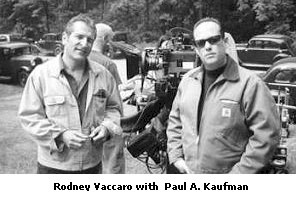
As Kaufman lacked the funds to option the script he'd initiated, he pitched it to Producer Paul Rauch, who had been producing network daytime dramas. Rauch loved the script, optioned the piece and became a member of the collaborative team. "Run the Wild Fields" is about a period in American life that is fascinating. I lived through it myself, as a child. It has a lot of resonance to it," says Rauch, who had such faith in the project, he continued to option it every year for six years. Responds Kaufman, "Because Rauch was a child in World War II, he had great ideas for this film because he had specific memories that Rodney and I did not have. His input helped to shape the script," relates Kaufman, who, at the time, was sharing producer credits, although he expressed an interest in directing the picture.
By 1994, Vaccaro had written a draft the trio had developed, and the long haul of shopping it to the studios began. Over the next few years, two different directors became attached, but ultimately they had other fish to fry. Whereas Kaufman, thinking someone else was going to direct, had detached himself emotionally from the film.
But his dedication to the project continued to manifest itself in the very specific props he purchased over the years for the picture such as the father's gold watch and an original 1944 war map for Pug's pins. It was important to him that everything about the movie had to be real to help create an environment to completely absorb the audience.
Ultimately, Kaufman's enduring passion for the material allied to his understanding of the characters and the story, convinced the producing team that he should direct the picture after he called Rauch to say, "What's going to get this movie made is a driving passion from a director. I have that passion." Rauch's reaction was positive. 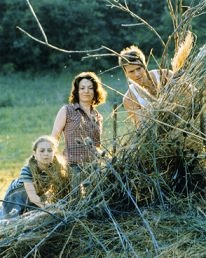 "I knew Paul had a great vision for the picture. He was very experienced as a career producer and I knew he could deal with both the creative and financial challenge of the picture." Comments Vaccaro, "I thought it was wonderful when Paul said he wanted to direct it. He has a quality you can't teach, an impeccable sense of taste." With Rauch and Vaccaro supporting Kaufman's decision, the first-time director began to pound the pavement.
"I knew Paul had a great vision for the picture. He was very experienced as a career producer and I knew he could deal with both the creative and financial challenge of the picture." Comments Vaccaro, "I thought it was wonderful when Paul said he wanted to direct it. He has a quality you can't teach, an impeccable sense of taste." With Rauch and Vaccaro supporting Kaufman's decision, the first-time director began to pound the pavement.
In 1997, Kaufman met Deborah Spera, Vice President of Motion Pictures, SHOWTIME NETWORK, who also agreed to support Kaufman. SHOWTIME gave Run the Wild Fields the green light in the spring of 1998.
THE CAST
"I'm very happy with the cast choices for the movie," says Kaufman, "I needed a great actress for the part of Ruby. In addition to being classically trained, Joanne Whalley has two children, so she has a maternal quality to her. She is the perfect Ruby.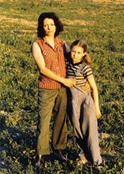
"Sean Patrick Flanery, who plays the mysterious drifter Tom, is a mysterious guy in real life. I've been a fan of his for years," says the director. Flanery echoes Kaufman's sentiments about Whalley, "Joanne is a nurturing mother, the opposite of the seductress I've seen her play in the past. More than anything, she brings a natural elegance to Ruby. She sort of glides everywhere and speaks with a certain resonance in her voice that is universally attractive."
Flanery and Whalley are known to be selective in the material they choose. "The quality of the piece drew their commitment and dedication," says Kaufman. Responds Whalley, "The script is so beautifully written, it was a joy to read. It's a very touching human story which deals with the second world war on a personal and intimate level.
Eloquent about the times, it shines a light on those who weren't on the battlefield, but waiting back home. The stranger coming into their lives, at that particular moment, has a profound effect on all the characters."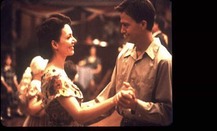 Flanery was attracted by the various layers of the story. "It's about people caught in a mixed-up world where certain things are acceptable and certain things aren't; it's about the inner workings of relationships and society at a time when life was simpler; it's about passion, friendship and humility which is universal."
Flanery was attracted by the various layers of the story. "It's about people caught in a mixed-up world where certain things are acceptable and certain things aren't; it's about the inner workings of relationships and society at a time when life was simpler; it's about passion, friendship and humility which is universal."
"It's very difficult to find a 10-year-old girl to carry a movie. Pug has to do this as it's told from her point of view," says Kaufman, who recollected Alexa Vega's outstanding talents when she acted, age 5, in A Promise to Carolyn, which Kaufman executive produced. "When Alexa auditioned, she blew me away. She's grown into a wonderful 11-year-old girl. Her timing and choices for the role of Pug were prefect. She's a bundle of energy. She's Pug."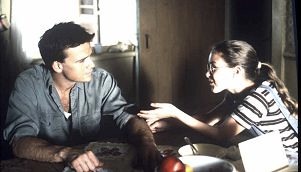
Vega couldn't have agreed more. "Pug's just wild, like the fields. She's kind of a tomboy, like me. When I read the first pages of the script where Pug runs through the fields, I thought, 'this is me. I have to do this.' I auditioned, and boom, I got it. I relate to Pug because she does the things I do. Anytime I'm playing in the fields, I do what suits the character, which is basically myself. I get to do all the stuff I normally do. On other shows I'm usually playing a prissy girl, doing exactly the opposite."
"Cotter Smith, who plays Silas, is also classically trained. His stage presence is very important to the part of Silas, who is a very complex character. Although he's the antagonist of the piece, I wanted him to redeem himself at the end," says Kaufman.
THE RELATIONSHIPS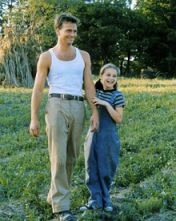 Comments Whalley, "Basically Ruby is faced with a huge decision during the course of the story. Her dilemma is that her husband has been missing in action for some time. Does she continue to believe he is alive, wait for him, or grieve now and move on with life. Ruby and Pug have been living in a sort of limbo waiting for Frank. Tom gives them hope, helping them to move on with their lives."
Comments Whalley, "Basically Ruby is faced with a huge decision during the course of the story. Her dilemma is that her husband has been missing in action for some time. Does she continue to believe he is alive, wait for him, or grieve now and move on with life. Ruby and Pug have been living in a sort of limbo waiting for Frank. Tom gives them hope, helping them to move on with their lives."
Flanery responds, "I play a drifter who has some skills in farming Ruby decides to put to work, and in the process, we become very good friends, but our friendship never graduates to its ultimate destination. Pug just yanks Tom's heart out of his chest and buries it in that field over there and makes the plants blossom. They both steal his heart, forming a bond that's irrevocable, changing Tom's life forever. It's a family that should have been."
Alexa agrees. "Pug has a full-blown crush on
Tom halfway through the movie. She thinks he's the coolest guy. But then she gets so connected to him, that when it's time for him to leave, it just breaks her heart. She wants him to be her dad, but she also wants her dad to be her dad." Sums up Flanery, "Run the Wild Fields is a beautifully landscaped portrait of American culture in the 40s at a time of war when ideology was a bit different. It reintroduces this place that we all come from."
THE LOOK
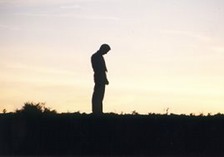
Visually, the director wanted to give the picture a documentary feel and a feature film look. "I felt that Run the Wild Fields had to have a raw quality to it." To achieve this, Kaufman and Director of Photography Thom Best used natural lighting, a series of varied camera movements ranging from slow motion to kinetic, often shooting into the light to create dramatic silhouetted images.
"I'm working with a director of photography who shoots independent feature films. My intention was to direct it creatively and stylistically as a feature film using wide-angle lenses to capture the landscape -- no filters, no diffusion.
We shot a clean clear picture to eliminate the feeling that there's a camera and crew there. It was shot so that we look at it through someone else's eyes, which are Pug's eyes and her memory. The production design and color tones are in muted tones to capture the period, but we used more bold colors for the fourth of July, which is when Ruby's and Pug's lives become enriched by Tom," Kaufman states.
From the outset, Production Designer Vlasta Svoboda's basic design approach was embodied in the fields as a symbol for life. "The visual concept was in the title of the show -- the wild fields waiting to be cultivated so new life can start," says Svoboda. "Initially the colors of the fields are subdued, non-aggressive and the textures are gentle, paralleling Ruby's life as she waits for her husband to return and for her life to start again. When Tom appears, he brings hope, culminating with the celebration of the new life, manifested by the 4th of July and VJ day festivities, where new textures and colors are introduced."
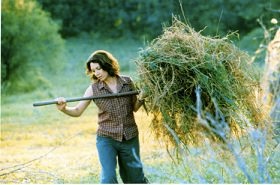
The costumes repeated this motif. Costume designer Michael Harris explains, "I wanted the clothes to have a natural lived-in look, so as to be completely believable. I selected a uniform soft-muted color palette, using natural fabrics, which cling and get sweaty as we are set in North Carolina in the summertime. Ruby's story follows an arc. At the beginning she's depressed and has let her farm go because her husband is missing. This is reflected in her clothing.
The introduction to Tom in their lives brings in some energy. She becomes concerned about her appearance, which is mirrored by her resuming cultivation of the farm."
LOCATIONS
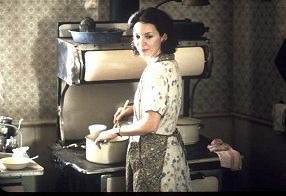 Although several locations were shot in downtown Toronto, including historical The Great Hall, the majority of the picture was shot in the rolling forested hills northeast of Toronto, on a farm near a lake and in a sleepy little town called Schomberg where the clapboard buildings date back to 1908. "It's like going back in time," smiles Kaufman, who researched the period and place assiduously. He made certain that there were gas rationing-stickers in the cars, that the American flag had only 48 stars and that such indigenous items as hollowed out birds-nest gourds, particular to North Carolina, were hung on a post outside the farmhouse.
Although several locations were shot in downtown Toronto, including historical The Great Hall, the majority of the picture was shot in the rolling forested hills northeast of Toronto, on a farm near a lake and in a sleepy little town called Schomberg where the clapboard buildings date back to 1908. "It's like going back in time," smiles Kaufman, who researched the period and place assiduously. He made certain that there were gas rationing-stickers in the cars, that the American flag had only 48 stars and that such indigenous items as hollowed out birds-nest gourds, particular to North Carolina, were hung on a post outside the farmhouse.
An impressive array of pre-war vintage cars, trucks and a tractor from the 1920's confirmed the time period. Flanery, a professional race-car driver, who normally drives the racing circuits at top speed, drove a 1928 International Harvester tractor at walking speed, to plow the fields. The all-steel mechanism was pretty rusty, but not rusty enough for the art department, who added even more rust to the three-bladed plow.
THE FIELDS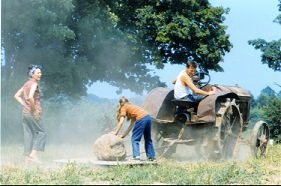 The fields play a major character in the film. Creating and changing their look was a mammoth task undertaken by Greensman, Richard Snider and his 11-man team who set out a month before principal photography, on May 24th to give the six-acre field the first of five different looks, each of which took two days to complete. For the first look, wild and fallow, Snider transplanted existing weeds into the field, added 800 pounds of mixed seed and used a back hoe to create clumps. In addition to irrigating the field, he stuck in three truckloads of dried elements such as bull rushes and thistles to suggest the field has been fallow for more than a year. For stage two, the weeds were mowed, stacked in piles and burned; stage three was plowing to turn the soil over for seeding; seeding took place during stage four. For the final stage five, seedlings were planted, symbolizing the beginning of a new life.
The fields play a major character in the film. Creating and changing their look was a mammoth task undertaken by Greensman, Richard Snider and his 11-man team who set out a month before principal photography, on May 24th to give the six-acre field the first of five different looks, each of which took two days to complete. For the first look, wild and fallow, Snider transplanted existing weeds into the field, added 800 pounds of mixed seed and used a back hoe to create clumps. In addition to irrigating the field, he stuck in three truckloads of dried elements such as bull rushes and thistles to suggest the field has been fallow for more than a year. For stage two, the weeds were mowed, stacked in piles and burned; stage three was plowing to turn the soil over for seeding; seeding took place during stage four. For the final stage five, seedlings were planted, symbolizing the beginning of a new life.
